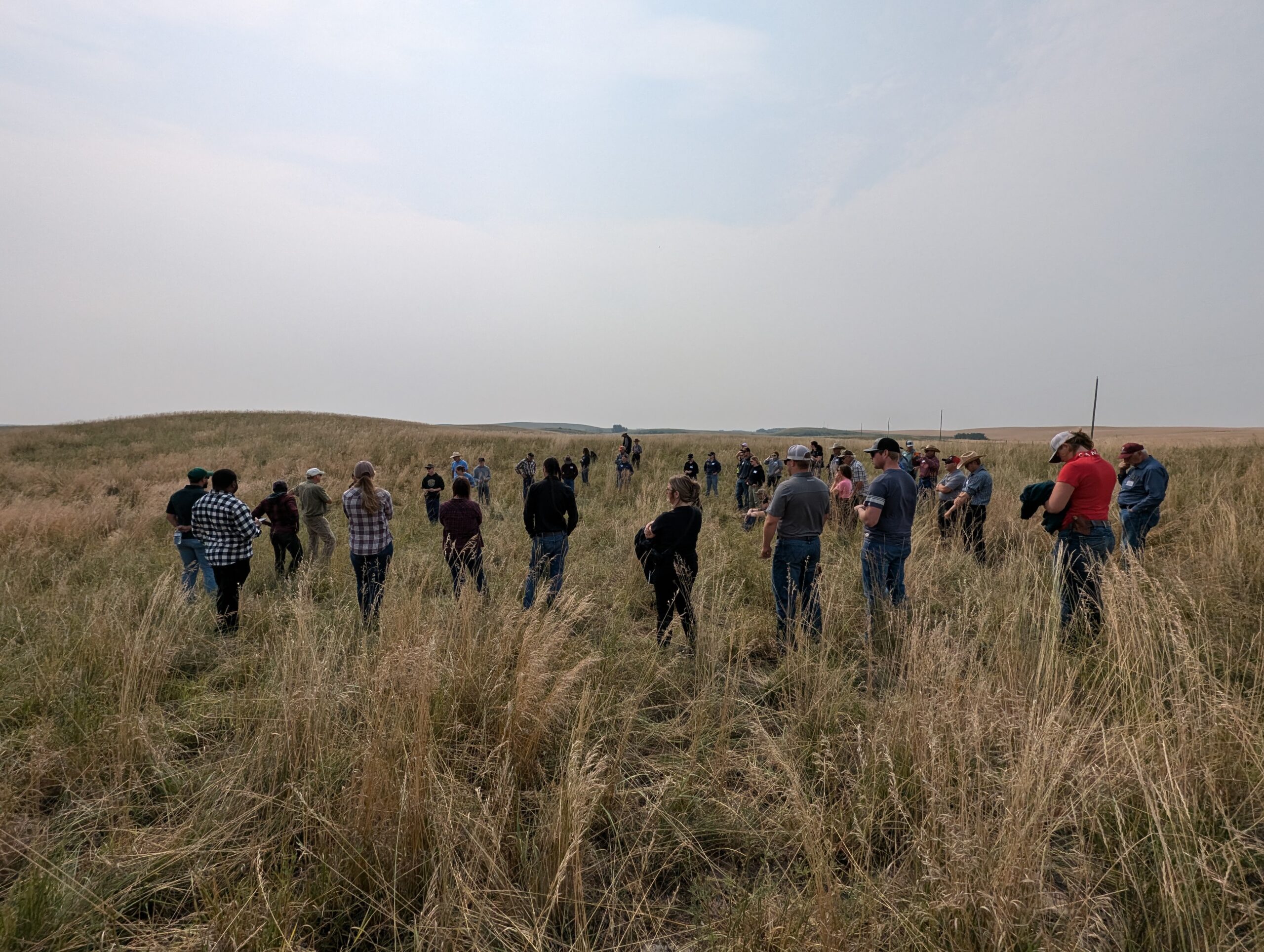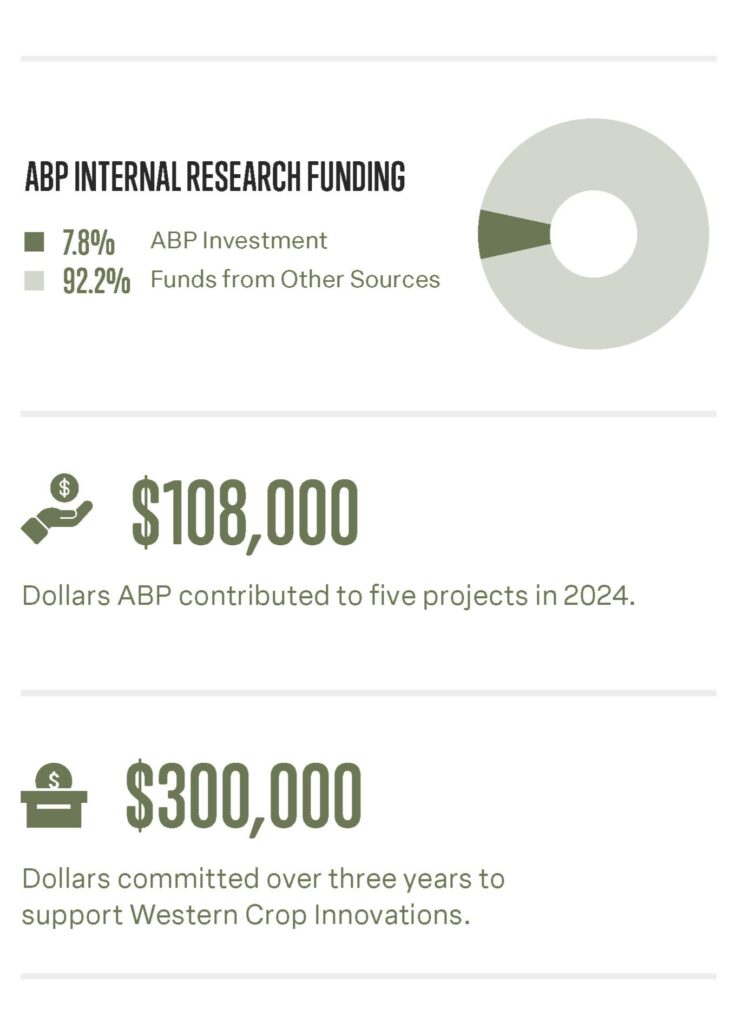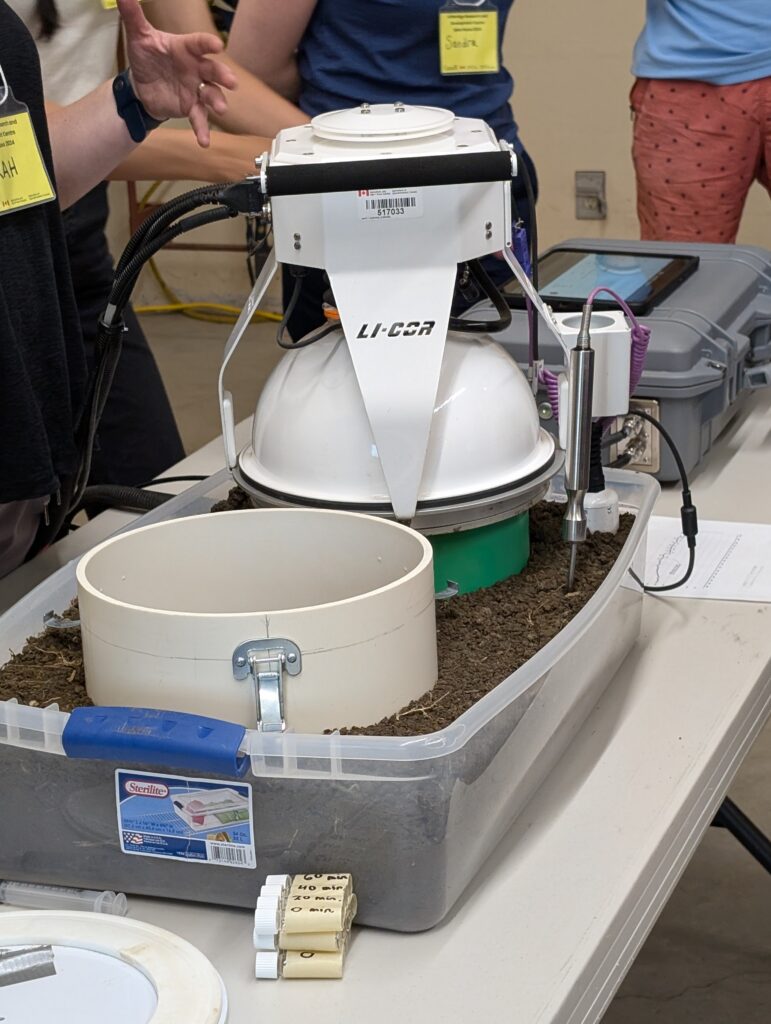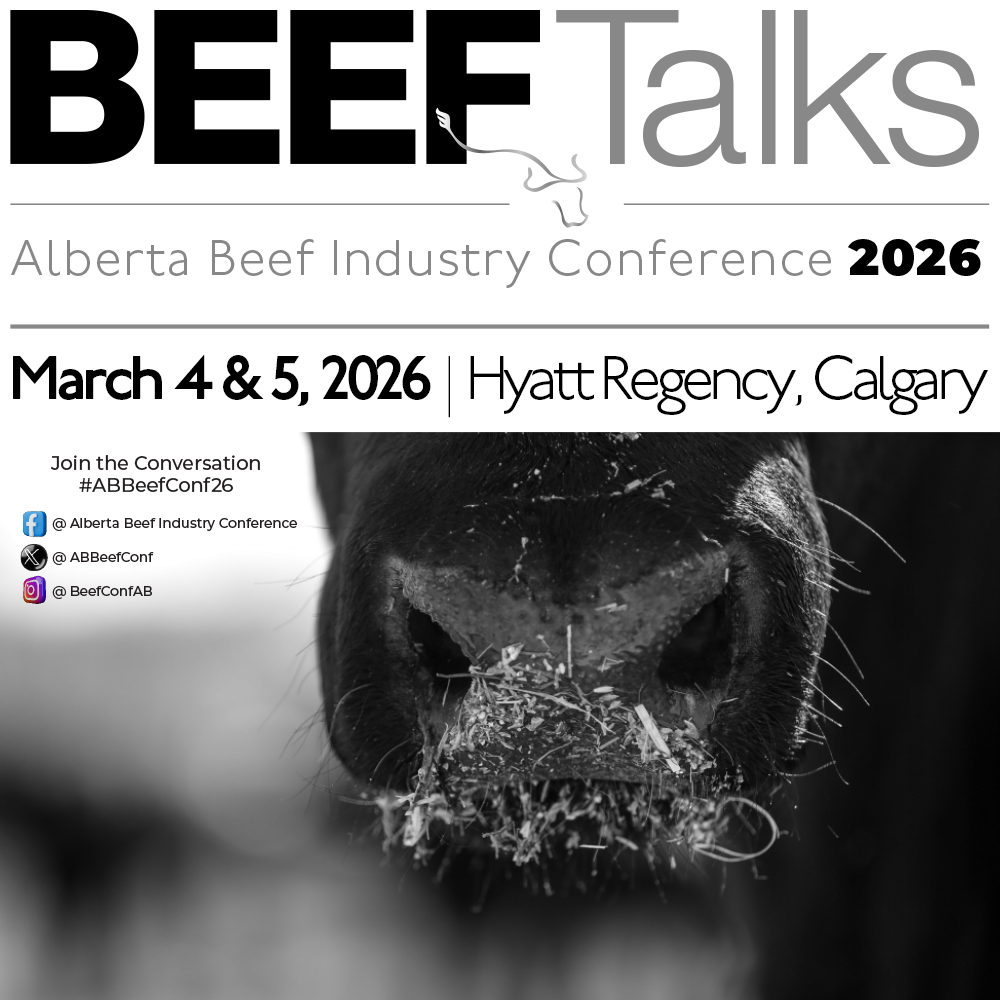AB Direct - Steers
Rail: ---
AB Direct - Heifers
Rail: ---
US Trade- Steers
Rail: ---
US Trade - Heifers
Rail: ---
Canadian Dollar
0.19

Annual Report | Beef production and extension
ABP’s producer-led Research Committee once again invested producer check off dollars into research in 2023 to improve the competitiveness, sustainability, and profitability of beef producers. Proposals are received through the Agriculture Funding Consortium, undergo a scientific technical review, and then are evaluated by the producer representatives on the ABP research committee. Decisions are guided by the Five-Year Canadian Beef Research and Technology Transfer Strategy and consider scientific merit as well as benefits for the beef sector in the short, medium or long term.

Over the last year, ABP committed $108,000 to five projects with a total project value of over $1.3 million for a leverage ratio of $12.77:1.
Project topics include: evaluating a new biodegradable netwrap product, rejuvenating saline soils with saline tolerant forages, understanding the relationship between feed intake, efficiency, and environmental stress in first-calf heifers, carcass characteristics of calves whose dams were supplemented with off-grade canola fat, and improving the establishment and seedling vigour of cicer milkvetch and Birdsfoot trefoil.
ABP also committed $300,000 over three years to support Western Crop Innovations (WCI). WCI is the re-imagining of the former Field Crop Development Centre and is Canada’s only crop breeding program with most of its focus on feed and forage varieties. ABP looks forward to helping to guide WCI’s business planning endeavours over the next few months and ensuring that new feed grain and forage varieties with improved yield, standability, and disease resistance continue to be available for producers in Alberta and beyond.
ABP’s newly expanded Beef Research Showcase delivered highly informative and relevant content to its attendees. Almost 70 in-person and virtual attendees were treated to a day of science at Olds College, learning about the latest research on topics like managing novel forage mixtures, ergot, the Canadian Cow-Calf Surveillance Network, precision ranching and virtual fencing, the influence of forage and crop rotations on carbon stocks, the Western Canadian Animal Health Network surveillance initiative, castration bands with a built in pain killer and more. Stay tuned for the next edition of the Beef Research Showcase – it’s an event you won’t want to miss!
Considerable time and effort were spent, in collaboration with other organizations, to develop a cooperative extension model for Alberta. This innovative approach sought to build capacity, provide training opportunities, and improve collaboration, while leveraging the efforts of existing organizations working in extension. Unfortunately, financial support to implement this model is currently unavailable, but hopefully it will be revived at some point in the future.

ABP continues to closely monitor the Highly Pathogenic Avian Influenza (HPAI) outbreak in dairy cattle in the United States. While at time of writing, no cases have been identified in dairy cattle in Canada, or in beef cattle in the U.S. or Canada, the need for vigilance remains. Now is an excellent time to think about preventing disease intrusion onto your operation. Several resources exist to help you! Examples include Animal Health Canada’s Emergency Management tools which include several helpful templates, as well as the Canadian Beef Cattle On-Farm Biosecurity Standard and Implementation Manual, VBP+’s Biosecurity Module, and the Beef Cattle Research Council’s PREVENT webpage.
Under the leadership of Animal Health Canada, the Foot and Mouth Disease (FMD) Working Group continues to make significant progress. Several producer-focused step by step protocols are currently in development to assist producers if FMD ever does make its way into the country. These protocols and procedures will be tested in tabletop exercises over the next few months and revised as necessary. In addition, ABP Beef Production and Extension Lead, Karin Schmid, will head to Kansas to observe a real-time foreign animal disease exercise that is played out over several days like it is happening in real life. ABP is also in discussions with the Office of the Chief Veterinarian, Alberta Pork and Alberta Milk to develop a project examining suitability of sites for mass disposal of larger animals in Alberta. Alberta
AgriSystems Living Lab (AALL) continues to be very busy with project activities. Last fall and winter produced a series of webinars, three feedback sessions with core participants and over 1,000 soil samples to be analyzed (along with many other types of samples). The summer was again busy with field days (and field work!). AALL has now expanded to 33 producers, including three Indigenous communities. We continue to operate in the true spirit of co-development with adjustments made as observations and data are provided to producers to guide their assessment of practices implemented on-farm. We are also ramping up another series of webinars, the release of our highly anticipated adoption rates report, and a new cycle of project planning for 2025! Thanks to all our project partners for the continued engagement and support!
This article was originally posted in Alberta Beef Producers’ 2024 Annual Report. Find the full report here.


